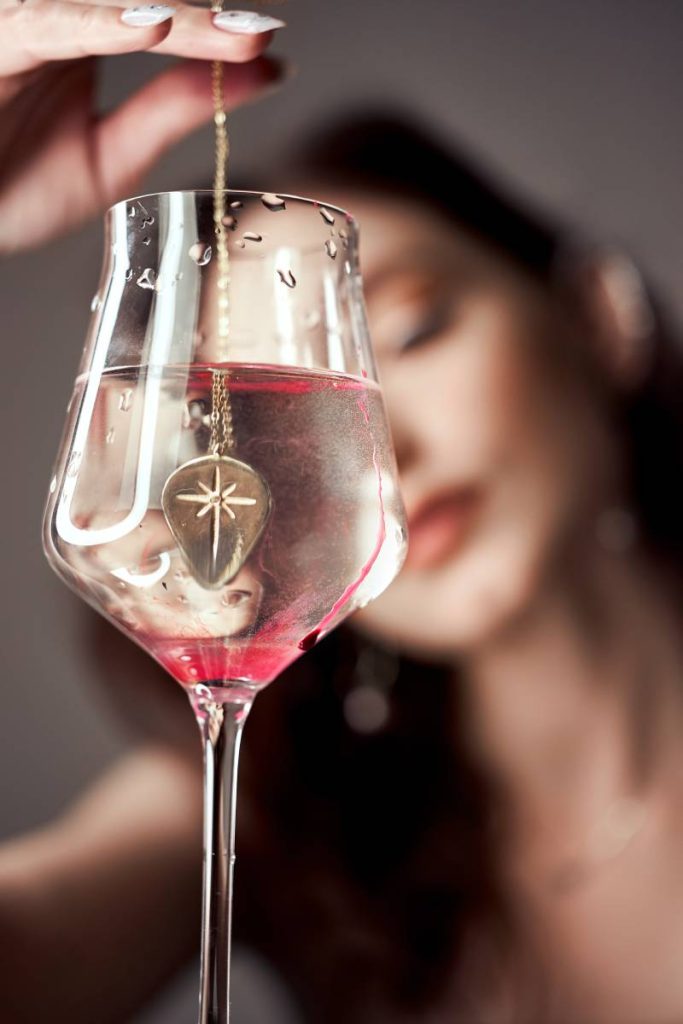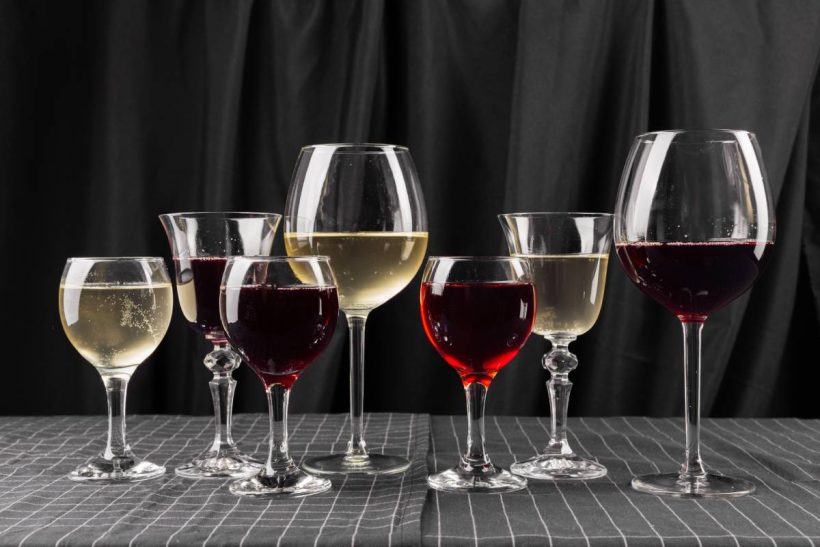Have you ever wondered why there are so many different shapes of wine glasses? It seems like there’s one for every occasion!
And you might have noticed that there are even specific glasses for certain types of wine, like Pinot Noir or Shiraz. But why is that? Does the shape of the glass really matter?
This guide explores the reasons behind the variety of wine glasses and helps you understand what to consider when choosing one.

Why do you use different glasses for wine?
The design of wine glasses plays a crucial role in enhancing the tasting experience by influencing how the wine interacts with air and how its aromas and flavours are perceived. Here are a few reasons why different types of wine glasses are used:
- Aroma concentration: The shape of the glass can concentrate the aromas of the wine, directing them towards the nose and enhancing the overall olfactory experience. For example, glasses with narrower openings can focus the aromas more effectively.
- Aeration: The size and shape of the bowl can influence how much air comes into contact with the wine, allowing it to breathe and develop its full range of flavours. Red wines, for instance, often benefit from larger bowls to encourage aeration.
- Temperature control: Different wines are best enjoyed at specific temperatures, and the shape of the glass can help maintain or regulate the temperature of the wine. For example, white wine glasses are typically designed to keep the wine cooler for longer.
- Flavour perception: The design of the glass can affect where the wine lands on the tongue and how its flavours are perceived. For example, glasses with wider openings can deliver the wine to different parts of the tongue, highlighting various taste sensations.
- Visual presentation: The aesthetics of the glass can also contribute to the overall enjoyment of the wine-drinking experience. Tall, elegant glasses, such as champagne flutes, can enhance the visual appeal of sparkling wines.
While it’s possible to drink wine from any vessel, using the appropriate type of glass can significantly enhance the sensory aspects of the wine, allowing for a more nuanced and enjoyable tasting experience.

What makes wine glasses unique?
Before diving into each specific type, let’s break down the main parts. Understanding these components sheds light on why wine glasses vary:
- The Rim: This is where your lips touch the glass. It’s often referred to as the “mouth” of the glass. The thickness of the rim is a key feature.
- The Bowl: This is the part of the glass where you pour the wine. A wider bowl makes it easier to swirl the wine, which is important for releasing aromas. Typically, red wine glasses have wider rims compared to white wine glasses.
- The Stem: This is the long, thin part you hold without touching the bowl, preventing the wine from warming up with your hands.
- The Base: This is the circular bottom that keeps the glass upright.
All these parts affect how the wine moves when swirled or sipped, as well as its temperature and aroma. Understanding these basics helps you grasp why different shapes matter when choosing a wine glass.
How many types of wine glasses are there?
Throughout human history, countless varieties of wine have been crafted, but in today’s world, these 16 types of wine glasses stand out. Some are tailored for specific wines, while others are versatile for a range of wines within a similar category.
You don’t necessarily need to own all of these glasses. Whether you’re running a Michelin restaurant, a bar, or enjoying wine at home, having a selection of these options can enhance your experience.

- Red wine glasses: These typically have a larger bowl to allow the wine to aerate and release its aromas.
- White wine glasses: These have a slightly smaller bowl compared to red wine glasses to help maintain the cooler temperature of white wines.
- Champagne flutes: Tall and narrow glasses designed to showcase the bubbles and retain the carbonation of sparkling wines.
- Bordeaux glasses: Characterized by a tall, broad bowl, ideal for Bordeaux and other full-bodied red wines.
- Burgundy glasses: These have a wider bowl than Bordeaux glasses, allowing more surface area for the wine to interact with air, ideal for aromatic and delicate red wines like Pinot Noir.
- Chardonnay glasses: Typically larger than other white wine glasses with a wider bowl to enhance the rich aromas and flavours of Chardonnay.
- Pinot Noir glasses: Similar to Burgundy glasses but slightly narrower, designed specifically to enhance the delicate aromas of Pinot Noir.
- Dessert wine glasses: Smaller in size, often with a tulip-shaped bowl, to concentrate the aromas of sweet wines like Sauternes or Port.
- Zinfandel glasses: These glasses typically have a wide bowl similar to Bordeaux glasses but slightly tapered at the top to concentrate the aromas of bold Zinfandel wines.
- Syrah/Shiraz glasses: Characterized by a large bowl and a narrow opening, ideal for capturing the bold aromas and flavours of Syrah or Shiraz wines.
- Cabernet Sauvignon glasses: Similar to Bordeaux glasses, but often with a slightly taller bowl to enhance the complex aromas and flavours of Cabernet Sauvignon.
- Merlot glasses: These glasses usually have a rounder bowl compared to Cabernet Sauvignon glasses, allowing the aromas of Merlot wines to concentrate towards the nose.
- Sauvignon Blanc glasses: Typically smaller with a narrower bowl compared to Chardonnay glasses, designed to highlight the crispness and acidity of Sauvignon Blanc wines.
- Riesling glasses: Tall and narrow glasses with a tapered rim, ideal for showcasing the floral aromas and delicate flavours of Riesling wines.
- Port glasses: Small glasses with a narrow bowl and a slight flare at the rim, perfect for sipping fortified wines like Port or Sherry.
- Sherry glasses: Similar in shape to Port glasses but often slightly smaller, designed to concentrate the aromas of Sherry wines.
These glasses are tailored to specific grape varietals or wine styles, each aiming to enhance the sensory experience of the wine being served.
In summary
There’s definitely a purpose behind having different types of glasses, and if you’re inclined, you can collect a glass for every type of wine imaginable. The options are endless! However, if you prefer not to clutter your space with too many glasses, there are a few versatile options that can cover most occasions.
And remember, if you’re on a budget or limited on space, having just one wine glass won’t diminish your enjoyment of the wine. Ultimately, it’s up to you how many glasses you want to invest in!










